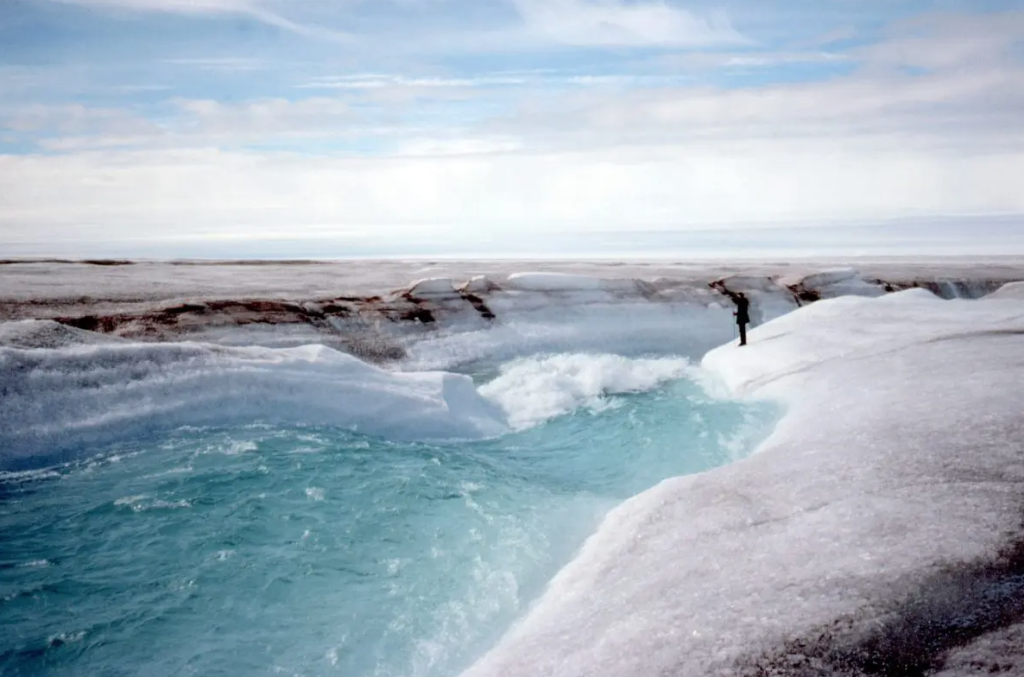The Greenland ice sheet will lose at least 6,000 km2 of surface area
(Sustainabilityenvironment.com) – Even if global greenhouse gas emissions are now reduced to zero, we face an “unavoidable” sea level rise of 27 cm. Due only to the melting of the Greenland glacier ice sheet embedded in the CO2 already in the atmosphere, Equal to 110 trillion tons of molten ice.
This is stated by a study published in Nature climate change that bases its forecasts on the trend of the climate in the last 20 years. The Greenland ice cap, that is, will release enough water to raise the oceans by 27 cm (with a margin of error of 68 mm) regardless of any emissive path the world takes in the future. Even the most ambitious.
The Greenland glaciers can raise the seas even by 78 cm
The imbalance of the ice already triggered by the climate of the period 2000-2019 (with snowfall no longer able to replace the ice lost annually) will result in a withdrawal of the glaciers of Greenland equal to an area of 6077-7622 km2. In practice, taking the median value, the area of the island that will return free from ice will be as large as the entire province of Turin. The volume loss of the shell will be 3.3% of the total, with a margin of error of ±0.9%.
Read also The thermal zero rises to 5184 m in the Alps: what does it mean?
“This is the result of increased mass turnover due to precipitation, the discharge of ice flows and the outflow of melting water”, specifies the study, which was based on satellite measurements of the loss of Greenland’s ice cap and its shape. A result that scientists define as “conservative”, because it assumes the total and immediate stop of emissions, is unrealistic. What can really happen in the future? If, as is possible, the worst year for melting Greenland ice, 2012, becomes the norm later in this century, the Danish island’s contribution to rising sea levels will be 78 cm.

